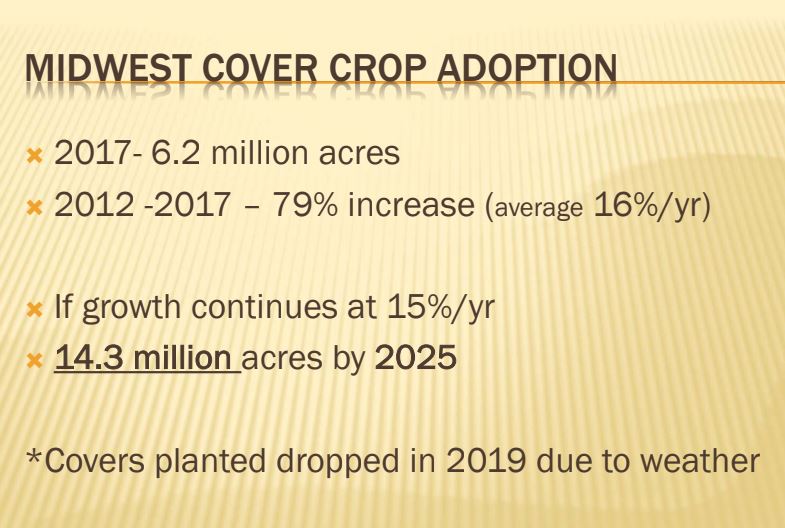Back in the 1990s, nobody but a few cranks and academics were playing around with no-till and cover crops. Then Mike Plumer started researching and testing the hypothesis that both practices would benefit farm profits and soil health.
Fast forward a quarter century, and take a look at the rate of adoption of cover crops in the Midwest.

The good news, over the past 12 years, more than 15 million acres of precious farm acreage have been planted in cover crops regularly, and are now building value and productive qualities. The first 10 years of Plumer’s and Dan Towery’s work to educate growers produced negligible results of cover crop acres. But by 2006, adoption began to gather momentum and the growth since then has been impressive.
The bad news, only about 5 percent of the acres planted for agriculture in the slightly expanded Midwest map are currently planting cover crops.
The good news: Three states (Pennsylvania, Indiana and Michigan) have about twice that average, with Pennsylvania topping the list at 12.9 percent of farm acreage in cover crops. (Michigan and Indiana are just behind, with 8.5 percent each). Further, both Michigan and Indiana have made better than 50 percent increases in just the last five years.
The bad news: if the growth rate continues at current rates, only about 14 million acres of the most productive farmland in the Midwest will be in cover crops by the year 2025. Presumably, the rest – more than 100 million acres – will still be in convenventional tillage.
